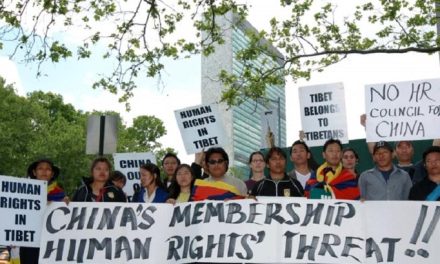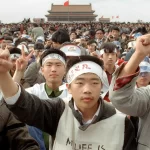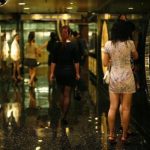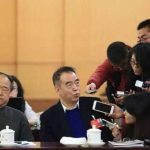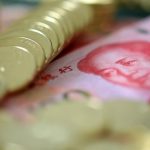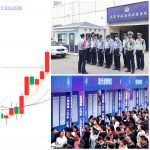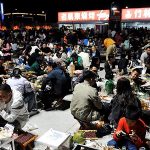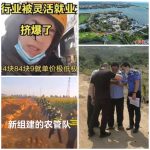By Wang Weiluo
Summary: If 4.52 million people are moved to the Xiong’an New Area as planned, Beijing will become the Chinese city with the worst aging problem
Xi Jinping proposed the construction of Xiong’an New Area [near Beijing] in 2014. The purpose was to reduce the “big city disease” and other problems caused by Beijing’s rapid population growth. The specific goal was to move out the so-called non-capital functions and thus drive some of the population out of Beijing. However, since 2017, the permanent-resident population in Beijing has declined, and this reduction accelerated in 2022. The population target envisioned by Beijing’s urban planners did not materialize, and the situation has changed fundamentally. But Xi Jinping’s administration lacks flexibility. He is unable to change the original policy in a timely manner in the face of unexpected new problems, but sticks instead to his original plan. On May 10, 2023, Xi led half of the Standing Committee of the Political Bureau of the Central Committee to inspect the Xiong’an New Area. On June 30, he presided over a meeting of the Political Bureau of the CPC Central Committee to review the “Opinions on Several Policies and Measures to Support the Construction of Xiong’an New Area with High Standards and High Quality.” Just the day before that meeting, the Beijing Municipal Office on Aging and the Beijing Association for Aging had issued the “2022 Overview of Beijing’s Aging Population,” stating that by the end of 2022, the permanent population of Beijing aged 60 and above would be 4.651 million, accounting for 21.30% of the total and indicating that Beijing is now a rapidly aging city. If Beijing moves 4.52 million people to the Xiong’an New Area as planned, the city itself will undoubtedly become the Chinese city with the most rapidly aging population. Compared with the problems caused by population growth, the problems caused by population reduction and population aging are much more serious, and may even cause Beijing to lose any development momentum for a long while.
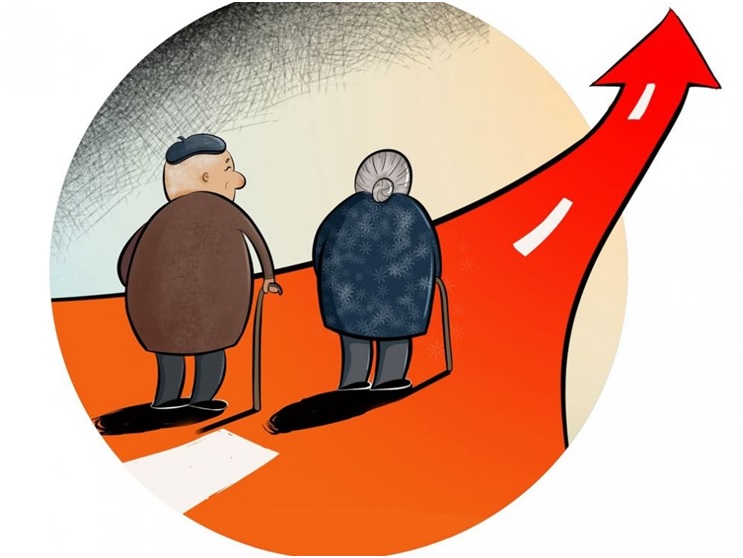 Figure 1: (Beijing) The trend in population aging. Source: online screenshot.
Figure 1: (Beijing) The trend in population aging. Source: online screenshot.
I. The CCP Politburo’s deliberations on several policies and measures to support the high-standard and high-quality construction of Xiong’an New Area
On May 10, 2023, Xi Jinping, accompanied by Li Qiang, Cai Qi, Ding Xuexiang, and others., inspected the Xiong’an New Area, and presided over a symposium on promoting its construction employing “high standards and high quality [1].” Xi Jinping warned at the meeting, “People can’t rely on their own likes and dislikes and deciding where to live. You have to move if necessary. You can’t engage in mere ‘evacuation on paper’ or on ‘returning in disguise.’ You can’t go back to government work after evacuating in name only. You can’t set up secondary governmental units in Beijing and add new ones at the same time.” Apparently, Xi Jinping’s warning was directly targeted, which shows that there is widespread soft resistance in Beijing against forced relocation to the Xiong’an New Area.
Fifty days later, on June 30, 2023, Xi Jinping presided over a meeting of the Political Bureau’s CPC Central Committee to discuss the issue of the Xiong’an New Area once again, and promulgated the “Opinions on Several Policies and Measures to Support the Construction of the Xiong’an New Area with High Standards and High Quality” [2].
Among all things on Xi Jinping’s slate, the preservation of Xiong’an ranks at the top. The Xiong’an case is a bit like the Qinling villa case in Shaanxi. Then, Xi Jinping gave the order, but subordinates softly resisted. In the end, Xi Jinping’s victory was complete, as he took down a large number of high-ranking officials in Shaanxi Province, and forcibly demolished villas that had obtained construction permits from the local government. It seemed that the matter was finally closed, but the economic and political losses were huge. Xi Jinping did not expect that while some villas in Qinling, Shaanxi were forcibly demolished, more appeared around Xi’an. In the end, Xi Jinping had no choice but to turn a blind eye. Xi personally planned, visited and inspected the Xiong’an New Area, and convened the highest meeting of the Central Committee of the Communist Party of China to study it. There have been several achievements, but overall the results have been minimal to this point. Fortunately, Xi has framed the construction of the Xiong’an New Area as a long-term or “millennial” plan, so that it will take a long time to achieve success. The plan requires every inch of land to be redeveloped. When the “Millennium Wheel” in Xiong’an Station [inaugurated in 2017 as a symbol of the progress of the construction of the area] comes to an end, the situation at that time can in theory test whether Xi Jinping’s decision with respect to the the New Area was correct, but anyone with common sense knows that the construction of Xiong’an New Area was a mistake from the beginning.

Figure 2: The development of the Xiong’an New Area is a mistake. The only thing that can be said is that Xiong’an New Area is a millennium-long plan. The “Millennium Wheel” in Xiong’an Station, picture source: Xinhua News Agency
II. The acceleration in the aging of Beijing’s population
Just one day before June 30, 2023, the Beijing Office on Aging and the Beijing Association for the Aging issued the “2022 Overview of the Development of Beijing’s Aging Population” [3]. According to the report, the number of elderly people in the city is growing rapidly.
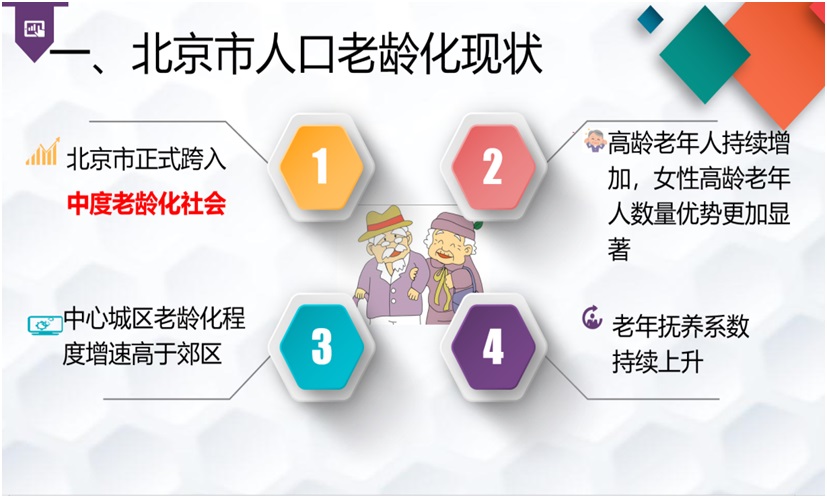
Figure 3: Beijing’s aging population. Picture source: Beijing Municipal Office on Aging, etc. “Beijing Aging Development Report (2021)”
Captions: ”1: Beijing is entering the stage of intermediate aging. 2: The increase in the number of the oldest elderly, particularly women, is most apparent. 3. The population is aging faster in the city center than in the suburbs. 4. The old-age dependency ratio continues to increase.
According to the UN’s 1956 “Population Aging and Its Economic and Social Consequences,” when a country or region’s population aged 65 and above accounts for more than 7% of the population, it means that it has entered an aging society; when it reaches 14%, it is a substantially aging society; if it exceeds 20%, it is a super-aging society [4]. These three figures are generally accepted, although the classification names may have different translations due to different understandings. In 1982, the World Congress on Aging in Vienna determined that a population aged 60 and above accounting for more than 10% of the total population means entering into an aging society [5]. Nowadays, the proportion of the population aged 60 and above is often used as an indicator for judging the extent of aging. Since 2017, the China Philanthropy Research Institute has been tasked every year by the Beijing Municipal Aging Office and the Beijing Aging Association to complete a report on the city’s aging.
Looking at the main data from the seven reports, it can be seen that the aging rate of Beijing’s population has accelerated significantly since 2017.
At the end of 2017, there were 3,946,000 people aged 65 or older in Beijing, occupying 17.98% of the population.
At the end of 2018, 4.076 million or 18.60% of the population was 60 or above, an increase of 130,000 from the previous year.
At the end of 2019, that population grew to 4,183,000, or 19.10%, an increase of 107,000 from the previous year.
At the end of 2020, there were 4,299,000 people 60 or over, a share of 19.64% and an increase of 116,000.
At the end of 2021 this population stood at 4,416,000, or 20.8%, increasing 117,000.
And at the end of 2022, the total number was 4,651,000, or 21.3%, an increase of 235,000, the highest increase in any of the five year.
In 2021, the proportion of permanent residents aged 60 and above in Beijing exceeded 20% for the first time, so the city officially entered the stage of a moderately aging society. (Author’s note: the proper term is a profoundly aging society.) In 2022, the city’s resident population aged 60 and over accounted for 21.3%, 1.5 percentage points higher than the national average, and the aging of the population will only further deepen.
By the end of 2022, Beijing had a permanent population of 3.301 million aged 65 and over, accounting for 15.1% of the total population, an increase of 185,000 over 2021. These data also prove that Beijing has entered the stage of profound aging.
The “2022 Overview of the Change in Beijing’s Aging Population” also pointed out that the old-age dependency ratio in Beijing continued to rise in that year, at the largest rate in the past 10 years. Calculated on the basis of the working-age registered population aged 15 to 59 supporting the registered population aged 60 and above, that ratio is now 51.1%, an increase of 3.8 percentage points over the previous year. This means that every two household registered laborers support one elderly person. The burden on Beijing residents to support the elderly is quite heavy, and it will be even heavier in the future.
III. Beijing’s decline in long-term-residents began in 2017
On the one hand, the total number of elderly people in Beijing continues to increase, as does its share of the city’s total population. So the aging of the population is more and more serious. On the other hand, the total permanent population of Beijing has begun to decrease.
According to the “2022 Beijing Statistical Bulletin on National Economic and Social Development” (data release date: March 21, 2023), the city’s permanent population would be 21.843 million at the end of 2022, a decrease of 43,000 from the end of the previous year.
According to the “Statistics for Populations, Population Composition and Population Growth for Beijing, 2021” [7], the permanent population of Beijing has been decreasing since 2017. The following is the size of this population in Beijing over the years:
End of 2012: 20,780,009
End of 2013: 21,250,000
End of 2014: 21,710,000
End of 2015: 21,880,000
End of 2016: 21,950,000
End of 2017: 21,940,000
End of 2018: 21,920,000
End of 2019: 21,900,000
End of 2020: 21,890,000
End of 2021: 21,886,009
End of 2022: 21,843,009
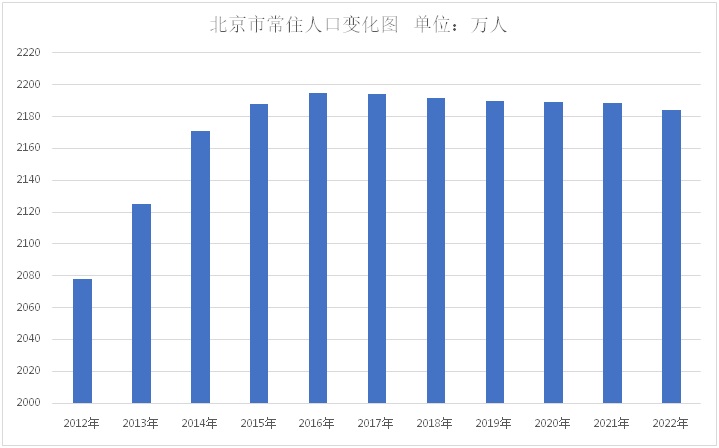
Figure 4: Beijing long-term resident population change
At the end of 2016, the permanent population of Beijing was 21.95 million, reaching its peak. By the end of 2022, the permanent population was only 21.843 million, a total decrease of 107,000. From the end of 2021 to the end of 2022 alone, the number decreased by 43,000, accounting for more than 40% of the population decrease since 2017.
The article “Research Concerning Beijing Population Regulation” [8], found in the Piku database, divides the change in total population for Beijing from 1949 to 2015 into five stages.
First stage, from 1949 to 1964: the rapid growth stage, with an increase of 3.562 million people, an average annual increase of 237,500 people, and an average annual growth rate of 4.18%. The main reasons were: 1. high natural population growth rate; 2. expansion of administrative regions.
Second stage, 1964-1990: a stage of steady growth, with an increase of 3.097 million people, an average annual increase of 123,900 people, and an average annual growth rate of 1.35%. The main reason for the more moderate growth rate was the implementation of the family planning policy.
Third stage, 1990-2000: recovery in population growth, with an increase of 2.776 million people, an average annual increase of 277,600 people, and an average annual growth rate of 2.3%. The main reason was the large inflow of the floating/migrant population.
Fourth stage, 2000-2010: accelerated growth, with an increase of 5.983 million people, an average annual increase of 598,300 people, and an average annual growth rate of 3.7%. The main reasons are: 1. continued large inflow of floating/migrant population; 2. easing of limits on authorized household-registration immigration;
Fifth stage, 2010-2015: the growth-slowdown stage, with an increase of 2.085 million people, an average annual increase of 417,200 people and an average annual growth rate of 2.04%. The main reason is that the city’s measures that limited growth became increasingly strict, for example the policy of restricting the purchase of housing and motor vehicles for people without permission to permanently live in Beijing. So the population growth rate has declined.
The one thing these five stages have in common is a growing population, although there are differences in the speed of growth. The author suggests slightly modifying these five stages, defining the the fourth stage as from 2000 to 2012, with an average annual increase of about 600,000 people. In the fifth stage, from 2013 to 2016, the growth slows down and the population reaches its peak. And as we saw, since 2017, Beijing’s population development has entered a new sixth stage. The permanent population in Beijing has begun to decrease, especially from 2022 onwards, and the rate of population decline will accelerate.
While the resident population in Beijing began to decrease, the birth rate of the resident population in particular also began to decline. In 2016 it was 9.32; in 2017, it was 9.06; in 2018, it was 8.24; in 2019, it was 8.12; in 2020, it was 7.17; in 2021, it was 6.35%.
The corresponding number of newborns was 202,500 in 2016, about 196,600 in 2017, about 177,500 in 2018, 174,800 in 2019, and 139,000 in 2021.
In 2022, the birth rate for permanent residents in Beijing was only 5.67%, and the death rate 5.72‰. The natural population growth rate was negative, at – 0.05%. From 2022 on, the growth in the permanent population in Beijing will be under pressure from two fronts. One is that the natural growth rate will be negative, but the growth of the incoming migranr population will also be negative.
IV. The city of Beijing’s population changes and its comprehensive program
The growth in Beijing’s resident population brought vitality and agglomeration effects to the city. The figure below shows the price trend for standard housing in Beijing from 2006 to 2016. It was basically consistent throughout with the growth trend for the long-term resident population. In 2006, the average price of housing actually in use (ownership or rental) was 7,877 yuan per square meter, which rose to 35,218 yuan in 2016, i.e. 4.5 times as high. Rising housing prices brought huge economic benefits to the Beijing Municipal Government.
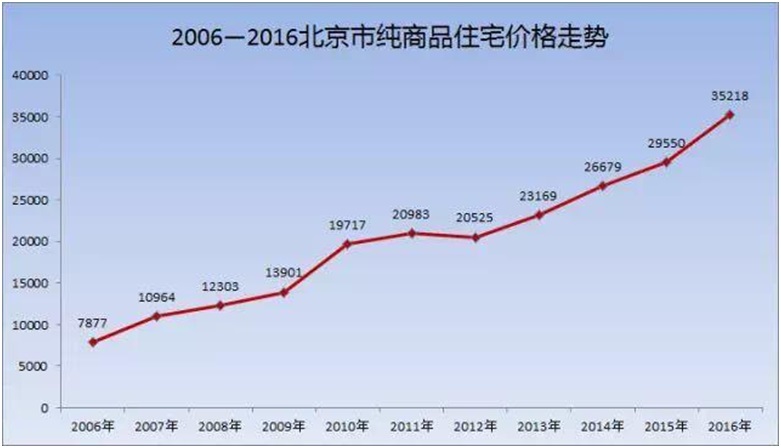
Figure 5: 2006-2016 trend in Beijing housing units in use. Source: online screenshot.
Undeniably, the growth of Beijing’s permanent population has also brought some problems, such so-called big city diseases as traffic congestion and deterioration in environmental quality. After the CCP’s 18th National Congress, politicians in China and Beijing focused on the problems brought about by population growth. They have said that Beijing’s permanent population exceeds the population size set by the city’s overall plan: the Beijing City Master Plan (2004-2020), approved by the State Council on January 27, 2005, stipulated that by 2020, the total population of Beijing should have been controlled at about 18 million people. However, at the end of 2012, the permanent population of Beijing had reached 20.78 million, surpassing the planned 2020 target. The proposal and decision to build the Xiong’an New Area was based on the need to reduce the population of Beijing. According to the book “Dealing with China,” written by former U.S. Treasury Secretary Paulson, Xi Jinping told him in July 2014 that the establishment of the Xiong’an New Area was Xi’s personal idea [9].
After Xi Jinping became general secretary, he began to carry out a new round of Beijing’s overall urban planning and the development planning for the Beijing-Tianjin-Hebei region. The Beijing City Master Plan (2016-2035), approved by the Central Committee of the Communist Party of China and the State Council on September 13, 2017, stipulates that the permanent population of Beijing would be controlled within 23 million by 2020, and would remain stable at this level for a long time subsequently. The overall plan put forward the requirement to form a population structure compatible with the capital city’s strategic positioning and functional improvement.
The population size prediction contained in China’s urban master plan is first, influenced by politics, and, second, the method is simple but outdated. From 2000 to 2013, the average annual growth of Beijing’s permanent population was close to 600,000, so there was a planning goal of controlling the size of Beijing’s permanent population to less than 23 million by 2020 and stabilizing at this level for a long time after.
However, by the end of 2020, the resident population of Beijing was only 21.89 million, a long way from 23 million, and the population started to decrease in 2017. By the end of 2022, the permanent population of Beijing will be reduced to 21.843 million, which is even farther away from the long-term target ceiling of 23 million after 2020.
In 2021, “Hong Kong 01” published a report under title “Beijing will enter the zone of ‘severe aging’ in 2035! The elderly population will be close to 7 million” [10] It indicated that by 2035, the elderly population in Beijing will be close to 7 million, exceeding 30%, indicating severe aging.
Obviously, the politicians in China and Beijing have not realized that the population of China and the resident population of Beijing will decrease for a significant amount of time, nor that the population decrease is still accelerating. When politicians are still entangled in the problem of big-city diseases brought about by Beijing’s population growth, they don’t realize that the reduction of Beijing’s permanent population will bring bigger and more serious problems to the city, such as an aging population and a lack of vitality in the city. By moving non-capital functions out of the city, not only can Beijing’s population structure not be optimized, but the city will more quickly confront the problems of a seriously aging society.
V. If the city of Beijing moves 4.52 million people to the Xiong’an New District…
According to a document published on the website of Zhonghou Mingde Company on August 27, 2020 and titled “4.52 million people in the capital will be moved to Xiongan New Area,” a Morgan Stanley report predicts exactly that, and construction there will directly drive trillions of yuan in investment. What is the planning and construction? “[11] On July 30, 2021, “People’s Xiong’an Net” published “Eight Categories! Xiong’an’s Undertaking of the Moving of Beijing’s Non-capital Tasks” [12], which stated that the 24th meeting of the Standing Committee of the 13th Hebei Provincial People’s Congress passed the “Hebei Xiongan New Area Regulations” (hereinafter referred to as the “Regulations”), which would be officially implemented on September 1 that year. Absorbing Beijing’s non-capital functions was the original intention in establishing the Xiong’an New Area. The “Regulations” also clarified the types of Beijing’s non-capital functions that Xiong’an New Area will focus on carrying out. There are 8 categories, namely:
1. Beijing colleges and universities, and their branches, branches, graduate schools, and institutions;
2. national scientific research institutes, national laboratories, key government laboratories, engineering research centers and other innovation platforms and innovation centers;
3. high-end medical institutions and their affiliated branches and research centers;
4. units in the fields of software and information services, design, creativity, consulting, etc., as well as corporate headquarters in modern logistics, e-commerce, etc.;
5. headquarters of banks, insurance, securities and other financial institutions and their branches;
6. centrally managed enterprises in the fields of new-generation information technology, biomedicine and health, energy conservation and environmental protection, high-end new materials, as well as innovative private enterprises and high-growth technology enterprises;
7. headquarters and branches of other large state-owned enterprises that conform to the industrial-development direction for the Xiong’an New Area;
8. other activities as determined by the government.
The first group of colleges and universities to be transferred to Xiong’an New Area are: Beijing University of Science and Technology, Beijing Jiaotong University, China University of Geosciences and Beijing Forestry University.
The first group of hospitals to be transferred to Xiongan New Area includes Peking Union Medical College Hospital and Peking University Hospital.
The first batch of large state-owned enterprises to be transferred to the Xiong’anNew Area include: China Star Network, China Telecom, China Huaneng, China Railway, China Unicom, China Mobile.
When Beijing relocates 4.52 million people to the Xiong’an New Area according to the plan, what will happen with respect to population aging in Beijing? Let’s do a simple calculation.
By the end of 2022, Beijing’s resident population will be 21.843 million, and after it falls by 4.52 million because of relocation, that will leave 17.323 million (ignoring continued population decline).
As of the end of 2022, the resident population of Beijing aged 60 and over is 4.651 million (ignoring the projected continued increase in the elderly population, and the possibility that a small number of the 4.651 million elderly may be relocated to the Xiong’an New Area).
The proportion of permanent residents aged 60 and over in Beijing will be as high as 26.85% of the total permanent population, so that for every person aged 60 or over there will be fewer than three others.
If Beijing is a country or region, with a proportion of permanent residents aged 60 and above accounting for 26.85% of the total permanent population, it ranks among the top eight in the world.
According to data from China’s seventh census (taking midnight on November 1, 2020 as the standard time point), there are 264.0188 million people aged 60 and over in the entire Chinese population, accounting for 18.70% of it. There are 13 cities that exceed the national average of 18.70%, and 9 of them exceed 20%, namely Nantong (30.01%), Dalian (24.71%), Shanghai (23.40%), Shenyang (23.24%), Harbin (21.98%), Chongqing (21.87%), Tianjin (21.66%), Changchun (20.85%) and Qingdao ( 20.28%) [13]. According to data from the same census, the proportion of Beijing’s population aged 60 and over was 19.6%, just below 20%.
Beijing has relocated 4.52 million people to the Xiong’an New Area, and the permanent population aged 60 and above accounted for 26.85% of the total permanent population, ranking second after Nantong.
If by 2035 the elderly population in Beijing is close to 7 million, the resident population in Beijing will remain at 17.323 million, and the elderly population percentage will exceed 40%.
Therefore, in the not-too-distant future, politicians in China and Beijing will have to reverse course and solve the problems of population decline and population aging in Beijing, stop dispersing non-capital functions, stop dispersing the population to Xiong’an New Area, and even move people back from Xiong’an New Area.
Judging from the CCP’s history, forced population migration is a common and inevitable occurrence. Examples include the resettlement of the Sanmenxia Reservoir Dam Project on the Yellow River, the resettlement of the Danjiangkou Reservoir Dam Project, the expulsion of people from the area of fhe Three Gorges Project on the Yangtze River, the relocation of colleges and universities in Beijing in 1969, and the forced migration of 17 million educated youths to the countryside. Perhaps many units and personnel in Beijing have already observed this law and the general trend of development, and adopted a policy of slowing down Xi Jinping’s evacuation policy, waiting for the outbreak of problems such as that of the aging population in Beijing.
Notes:
[1]习近平在河北雄安新区考察并主持召开高标准高质量推进雄安新区建设座谈会,来源:新华社,2023年5月10日,刊登在中华人民共和中央人民政府网 (“Xi Jinping has inspected the Xiong’an New Area in Hebei and presided over a symposium on promoting the construction of the Xiong’an New Area with high standards and high quality.” Source: Xinhua News Agency, May 10, 2023, published on the website of the Central People’s Government of the People’s Republic of China),https://www.gov.cn/yaowen/2023-05/10/content_5754808.htm
[2]中共中央政治局召开会议审议关于支持高标准高质量建设雄安新区若干政策措施的意见中共中央总书记习近平主持会议,来源:新华社,2023年6月30日,刊登在中华人民共和中央人民政府网 (“The Political Bureau of the Central Committee of the Communist Party of China held a meeting to review opinions on several policies and measures to support the high-standard and high-quality construction of Xiong’an New Area. General Secretary of the Central Committee of the Communist Party of China Xi Jinping presided over the meeting.” Source: Xinhua News Agency, June 30, 2023, published on the website of the Central People’s Government of the People’s Republic of China),https://www.gov.cn/yaowen/liebiao/202306/content_6889222.htm
[3]本市常住老年人达465.1万人 2022年增幅为5年来最高,来源:北京日报,刊登在北京市人民政府网,2023年6月30日 (“The number of permanent residents in this city will reach 4.651 million, and the increase in 2022 will be the highest in five years.” Source: Beijing Daily, published on the website of the Beijing Municipal People’s Government, June 30, 2023),https://www.beijing.gov.cn/gongkai/shuju/sjjd/202306/t20230630_3150637.html
[4]沈铭辉:人口老龄化的影响及治理对策——以韩国为例,来源:人民论坛,2020年11月20日,65岁以上人口占全国总人口数的比重达到7%—14%则被视为老龄化社会,达到14%—20%则被称为老龄社会,20%以上则被称为超老龄社会,分类一样,翻译的名称略有不同 (Shen Minghui, “The Impact of Population Aging and Countermeasures—Taking South Korea as an Example,” Source: People’s Forum, November 20, 2020. The population over 65 years old accounts for 7%-14% of the total national population, which is considered an aging society; 14%-20%, it is also termed an aging society; more than 20%, it is called a super-aging society. The classification is the same, and the translated names are slightly different.),http://www.rmlt.com.cn/2020/1120/599374.shtml
[5]全球老龄化状况及其应对措施,来源:新华网,2015年10月1日 (Global Aging: Status and Countermeasures, Source: Xinhuanet, October 1, 2015),https://www.xinhuanet.com//world/2015-10/01/c_128285525.htm
[6]北京市统计局、国家统计局北京调查总队:人口,刊登在北京市人民政府网,2023年3月22日 (Beijing Municipal Bureau of Statistics, National Bureau of Statistics Beijing Survey Team: Population, published on the Beijing Municipal People’s Government website, March 22, 2023),https://www.beijing.gov.cn/renwen/bjgk/rk/202303/t20230322_2941847.html
[7]2021年北京市人口数量、人口构成、人口增长情况数据统计,观研报告网,2022年5月13日,https://www.chinabaogao.com/data/202205/595173.html
[8]北京市人口调控研究,京津冀发展报告(2017),皮库数据库,https://www.pishu.com.cn/skwx_ps/multimedia/ImageDetail?SiteID=14&type=ImageTable&ID=8569446&ContentType=MultimediaImageContentType&isHost=null
[9]习近平两年前就要雄霸天下?美前财长前泄“天机”,《阿波罗新闻网》,2017年8月1日,https://www.aboluowang.com/2017/0801/970621.html
[10]伍玥:北京2035年進入「重度老齡化」!老年人口將接近700萬 | ,香港01 https://www.hk01.com/article/705186?utm_source=01articlecopy&utm_medium=referral https://www.hk01.com/%E8%B2%A1%E7%B6%93%E5%BF%AB%E8%A8%8A/705186/%E5%8C%97%E4%BA%AC2035%E5%B9%B4%E9%80%B2%E5%85%A5-%E9%87%8D%E5%BA%A6%E8%80%81%E9%BD%A1%E5%8C%96-%E8%80%81%E5%B9%B4%E4%BA%BA%E5%8F%A3%E5%B0%87%E6%8E%A5%E8%BF%91700%E8%90%AC
[11]首都452万人将迁至雄安新区,到底规划建设如何?来源搜狐网,刊登在中厚明德网,http://www.zhonghoumingde.com/index.php?c=article&id=111367
[12]刘师豪:八大类!雄安承接北京非首都功能疏解类型确定,人民雄安网,2021年7月30日,http://www.rmxiongan.com/n2/2021/0730/c383557-34845920.html
[13]林小昭:35个重点城市老龄化大数据:11城进入深度老龄化,深圳最年轻,第一财经,2021年7月12日,https://www.yicai.com/news/101108152.html
【议报首发,转载时请务必在正文之前加上出处和链接:https://yibaochina.com/?p=250897】
This piece was translated from Yibao Chinese. If republished, please be sure to add the source and link, https://www.yibao.net/2023/07/27/the-irrationalit…jings-population/, before the text when reposting.
【作者观点不代表本刊立场】
The views of the author do not necessarily represent those of this journal.



